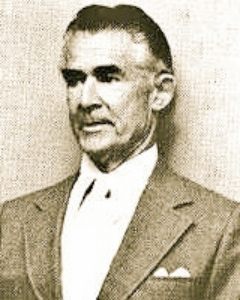The Tycoon Who Planned His Very Own Island Utopia in the 1970s

The Floating City Project Design from The Seasteading Institute. (Photo: Courtesy The Seasteading Institute)
When governments buckle, stock markets collapse, and clowns run for president, a billionaire’s thoughts turn naturally to a favorite fantasy: private utopia. The Seasteading Institute, funded by PayPal founder Peter Thiel, recently announced it intends to launch floating cities by 2020. Thiel, the closest living embodiment of an Ayn Rand character, longs for libertarian territories, untrammeled by big government regulation. Google’s Larry Page also says he wants to “set aside a part of the world” for free experimentation. What’s not to love about the DIY nation? No meddling regulators, no patent trolls, no privacy hawks, no taxes!
Plus, you can design your own flag.
Today’s gazillionaires are not the first rich guys to dream of perfecting the ugly world around them. (See especially company towns such as Pullman, Illinois.) Their most direct ancestor may be one of the strangest tycoons of the 20th century, and his curious, failed scheme of the 1970s.
Robert Klark Graham invented shatterproof plastic eyeglasses in the 1940s, and was worth $100 million by the early 1970s—back when $100 million was real money. An ardent conservative, Graham was obsessed with the idea that America was being overrun by morons: Smart people were having too few children and stupid people were having too many. This genetic suicide would lead the nation to catastrophe, Graham believed, and ultimately doom America to communist dictatorship. (Graham imagined the world of Idiocracy 40 years before the movie.)
But Graham, like his modern day counterparts, also brimmed with cheery technological utopianism. He was an inventor, and believed that science could prevent the genetic doom, and perfect humanity.
 Robert Graham, from an undated photo. (Photo: Geni)
Robert Graham, from an undated photo. (Photo: Geni)
So in the early 1970s, Graham tried to start a country. Of course he thought an island would be best. Graham instructed George Michel, a vice president at his eyeglasses company, Armorlite, to locate an island that Graham could buy and flag as a sovereign—or at least semi-sovereign—nation. Graham told Michel that the island should be at least five miles wide and 15 miles long.
Michel enlisted several Los Angeles real estate agents, and they eventually located four or five promising candidates, mostly small islands in the Atlantic Ocean that Great Britain might surrender for the right price. Graham was thrilled. Next, he assigned Michel and several Armorlite colleagues to design the island’s living and working quarters. Graham decreed that the island had to be completely self-sufficient, and that no cars would be permitted on it. Michel drew blueprints for prefabricated living saucers that could be stacked on land or in the sea. He designed a futuristic sewage system, greenhouse, and food factories. His masterpiece, Michel recalled fondly, when I interviewed him several years ago, was a vacuum-tube-driven transportation system, in which gyroscopically balanced pods would zip passengers from one part of the island to another. (Elon Musk surely dreams of gyroscopically balanced, vacuum pods!)

Another tech utopia: The Blueseed Project wants to build a floating island near the Bay Area. (Photo: Blueseed Project)
Graham intended to create an elite research colony. The world’s best practical scientists would come to the island, enticed by lavish living conditions, and the fanciest laboratories money could buy, and they would start inventing. Grahamland would support itself: when scientists produced something valuable, they and the colony would share the royalties. The inventors would get rich, and Grahamland would prosper. Graham was convinced that scientists would flock to his island, because he was sure they also desired an escape from the morons, weaklings, and imbeciles who increasingly dominated the rest of the world. Science would be Grahamland’s god and its law. It would be a rational empire, Graham’s own private Atlas Shrugged.
Alas, Grahamland never progressed beyond the planning stages. Michel quit Armorlite in a stock dispute. Graham got distracted and never managed to buy the island. But the private nation was pure, distilled essence of Robert Graham: the entrepreneurial vigor; the cockamamie grandeur; the unshakable faith in practical science; the contempt for the pig-ignorant, lazy masses; and the infatuation with finding—and claiming—the world’s best men.
Undeterred by the project’s failure, Graham remained determined to stop genetic doom and raise an army of geniuses. So in the late 1970s, he launched the Repository for Germinal Choice, a sperm bank for Nobel Prize winners, whose clients would be women who belonged to Mensa. The Repository would operate until the late 1990s—I wrote this book about it—and produce more than 200 children, the largest, oddest experiment in human genetic engineering in American history. If seasteading fails, will eugenics be Peter Thiel’s next stop?





Follow us on Twitter to get the latest on the world's hidden wonders.
Like us on Facebook to get the latest on the world's hidden wonders.
Follow us on Twitter Like us on Facebook